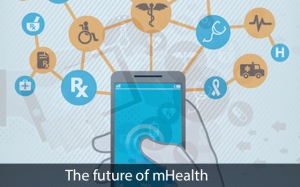The Healthcare Landscape is in the process of undergoing a major change courtesy reforms which have either been brought in or are scheduled in the near future. These reforms are expected to pose huge challenges for providers as they grapple with ICD-10 coding standards, payment and reimbursement reforms, new healthcare models like Accountable Care Organizations etc. They are expected to also make huge investments in meaningfully adopting EHRs or face penalty. All this is taking a toll on the revenue stream. Physicians who are otherwise expected to focus on providing care to their patients in the best possible way are now required to devout a considerable amount of their valuable time in understanding the mandates and adapting to them. Does it mean the moving forward we are unlikely to come across independents physicians? Well, the Federal push to adopt Health IT has kind of compelled many physicians to join hospitals or similar such setups in order to ensure exemption from the additional burden to investing in IT and having to keep up the multitude of technological and regulatory requirements .

The financial and administrative strain on these private practices has resulted in physicians actively looking out for opportunities for affiliation. The move seems quite logical also; to let existing setups deal with all matters not directly related to patient care while the physicians can channelize your energies into it. As early as 2005, the percentage of physician–owned practices was at 66% but has reduced considerably to 33% by 2013. Also, the new physicians entering the industry do not seem too keen to own an independent practice; concerned mainly by the administrative hassles involved in holding one and the resultant squeeze in the profitability levels. For the hospitals also, acquiring Physicians goes a long way in ensuring an increase in the cash flow. At the end of the day hospitals are business entities which have to operate profitably to serve their patients better and also in a larger sense project the industry as lucrative to young people looking at taking up the medical profession. Since adoption of IT mandates has increased the financial pressure on the independent establishments, long term sustainability efforts seem to be channelized towards their affiliation to hospitals.
Inspite of all these developments, there are quite a number of physicians who still want to operate in an independent manner. To make it a reality they need to have an upgraded and integrated software revenue cycle management, practice management and electronic health records. This was revealed by a survey which was conducted amongst Practices which are Meaningful Stage 1 attested. This is where cloud based EHRs and RCMs have innovated and come up with solutions that meet all regulatory requirements. Cloud Based EMR requires a user to pay a subscription fees rather than purchase it. The fees generally need to be paid on a monthly basis. Users, i.e. physicians in this case, are not required to make any investment on associated hardware and software. It is reckoned as cloud because the storing of data is done across a network of data storage centers and not in any one particular location.
The major reasons for physicians to want to adopt this model, so as to enable them to have an independent existence, are:
-
They do not have to bother about meeting the HIPPA regulation
-
The onus to meet Meaningful Use also lies with Vendor
-
The model offers exceptional flexibility for Physicians on the move
-
There is High focus on data security and protection
-
It is highly cost effective
There are also some drawbacks of using Cloud based EHRs. The major ones are:
-
High dependence on vendors for data backups and security
-
Setup likely to suffer if the vendor closes down
If a physician is looking at the possibility of entering into a long-term relationship with a vendor, then it would be cost effective to buy the software. However, in the given circumstances when a lot of consolidation is taking place in the EHR marketplace, licensing is a better option. Physicians looking for getting software developed can hire developers from healthcare software development companies in India who can help build clinical and EHR/EMR software projects within allocated budgets and time schedules.
We provide healthcare mobile app development services. To know more about the expertise of our healthcare software developers, please visit us at Mindfire Solutions.


